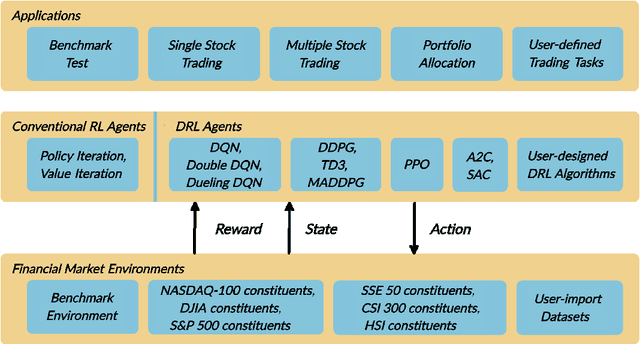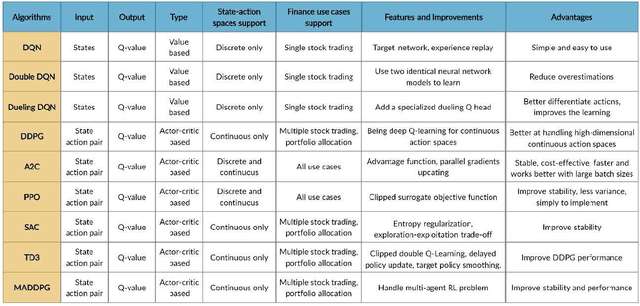Bowen Xiao
FoldNet: Learning Generalizable Closed-Loop Policy for Garment Folding via Keypoint-Driven Asset and Demonstration Synthesis
May 14, 2025



Abstract:Due to the deformability of garments, generating a large amount of high-quality data for robotic garment manipulation tasks is highly challenging. In this paper, we present a synthetic garment dataset that can be used for robotic garment folding. We begin by constructing geometric garment templates based on keypoints and applying generative models to generate realistic texture patterns. Leveraging these keypoint annotations, we generate folding demonstrations in simulation and train folding policies via closed-loop imitation learning. To improve robustness, we propose KG-DAgger, which uses a keypoint-based strategy to generate demonstration data for recovering from failures. KG-DAgger significantly improves the model performance, boosting the real-world success rate by 25\%. After training with 15K trajectories (about 2M image-action pairs), the model achieves a 75\% success rate in the real world. Experiments in both simulation and real-world settings validate the effectiveness of our proposed framework.
RoboHanger: Learning Generalizable Robotic Hanger Insertion for Diverse Garments
Dec 02, 2024



Abstract:For the task of hanging clothes, learning how to insert a hanger into a garment is crucial but has been seldom explored in robotics. In this work, we address the problem of inserting a hanger into various unseen garments that are initially laid out flat on a table. This task is challenging due to its long-horizon nature, the high degrees of freedom of the garments, and the lack of data. To simplify the learning process, we first propose breaking the task into several stages. Then, we formulate each stage as a policy learning problem and propose low-dimensional action parameterization. To overcome the challenge of limited data, we build our own simulator and create 144 synthetic clothing assets to effectively collect high-quality training data. Our approach uses single-view depth images and object masks as input, which mitigates the Sim2Real appearance gap and achieves high generalization capabilities for new garments. Extensive experiments in both simulation and the real world validate our proposed method. By training on various garments in the simulator, our method achieves a 75\% success rate with 8 different unseen garments in the real world.
FinRL: A Deep Reinforcement Learning Library for Automated Stock Trading in Quantitative Finance
Nov 19, 2020



Abstract:As deep reinforcement learning (DRL) has been recognized as an effective approach in quantitative finance, getting hands-on experiences is attractive to beginners. However, to train a practical DRL trading agent that decides where to trade, at what price, and what quantity involves error-prone and arduous development and debugging. In this paper, we introduce a DRL library FinRL that facilitates beginners to expose themselves to quantitative finance and to develop their own stock trading strategies. Along with easily-reproducible tutorials, FinRL library allows users to streamline their own developments and to compare with existing schemes easily. Within FinRL, virtual environments are configured with stock market datasets, trading agents are trained with neural networks, and extensive backtesting is analyzed via trading performance. Moreover, it incorporates important trading constraints such as transaction cost, market liquidity and the investor's degree of risk-aversion. FinRL is featured with completeness, hands-on tutorial and reproducibility that favors beginners: (i) at multiple levels of time granularity, FinRL simulates trading environments across various stock markets, including NASDAQ-100, DJIA, S&P 500, HSI, SSE 50, and CSI 300; (ii) organized in a layered architecture with modular structure, FinRL provides fine-tuned state-of-the-art DRL algorithms (DQN, DDPG, PPO, SAC, A2C, TD3, etc.), commonly-used reward functions and standard evaluation baselines to alleviate the debugging workloads and promote the reproducibility, and (iii) being highly extendable, FinRL reserves a complete set of user-import interfaces. Furthermore, we incorporated three application demonstrations, namely single stock trading, multiple stock trading, and portfolio allocation. The FinRL library will be available on Github at link https://github.com/AI4Finance-LLC/FinRL-Library.
Recurrent Feedback Improves Feedforward Representations in Deep Neural Networks
Dec 22, 2019



Abstract:The abundant recurrent horizontal and feedback connections in the primate visual cortex are thought to play an important role in bringing global and semantic contextual information to early visual areas during perceptual inference, helping to resolve local ambiguity and fill in missing details. In this study, we find that introducing feedback loops and horizontal recurrent connections to a deep convolution neural network (VGG16) allows the network to become more robust against noise and occlusion during inference, even in the initial feedforward pass. This suggests that recurrent feedback and contextual modulation transform the feedforward representations of the network in a meaningful and interesting way. We study the population codes of neurons in the network, before and after learning with feedback, and find that learning with feedback yielded an increase in discriminability (measured by d-prime) between the different object classes in the population codes of the neurons in the feedforward path, even at the earliest layer that receives feedback. We find that recurrent feedback, by injecting top-down semantic meaning to the population activities, helps the network learn better feedforward paths to robustly map noisy image patches to the latent representations corresponding to important visual concepts of each object class, resulting in greater robustness of the network against noises and occlusion as well as better fine-grained recognition.
 Add to Chrome
Add to Chrome Add to Firefox
Add to Firefox Add to Edge
Add to Edge